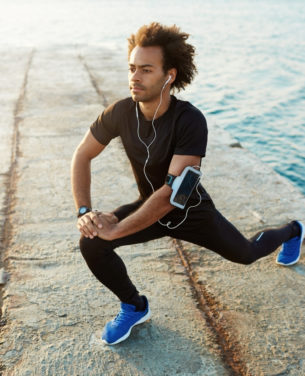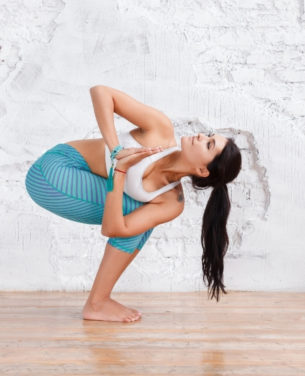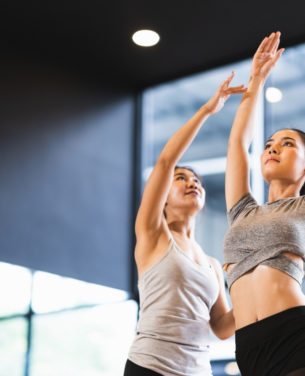Equilibrium
by Circuit
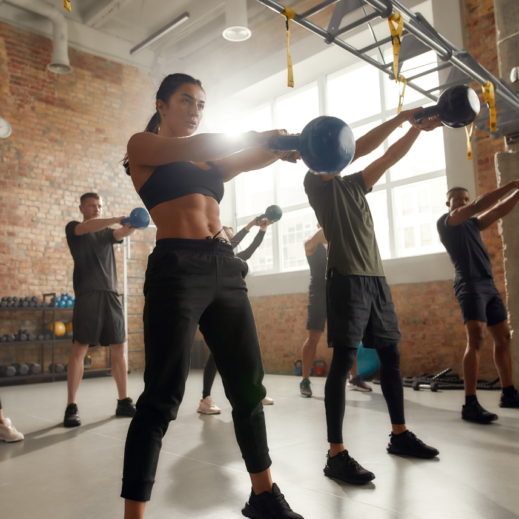
The Best Group Fitness Classes For Beginners
23.09.2022
If you’re new to fitness, the great news is there are so many classes out there with a variety of formats that are full of variety and cater to all levels. Sometimes starting a specific fitness program can be costly depending on memberships, equipment needed, or startup costs, and it can be a huge commitment depending on how you are getting started. Not to mention, other programs can be limited to structured methodology, giving you a more narrow approach to all the different ways to enjoy fitness. However many group fitness classes exist that require little to no equipment including Yoga, Pilates, HIIT, and Barre as just a few examples. For those intimidated especially by group settings, virtual group fitness offers the added benefit of guided direction and interaction without the pressure of a traditional in-person group setting.
In-person group fitness, will always be a great choice for those who appreciate direct motivation and encouragement from peers, and who might prefer a little extra guidance from instructors on form, technique, or modifications. If you have a chance to practice both virtual or in-person group fitness, the hybrid combination of both can provide all the flexibility you need to incorporate fitness into your routine and turn a task into an enjoyable part of your lifestyle. If you’re starting on your fitness journey today, we highly recommend the classes below, all of which we offer both in-person or virtually in many of our communities!
Yoga

By far, Yoga is probably one of the best classes not just for all levels of fitness, but for all levels of comfort. For those dealing with recovery from an injury, issues with pain or stiffness in muscles or joints, or anyone who is craving a little more sanity and relaxation, Yoga can help with all of the above. A traditional Hatha Yoga class which is the most common type of group fitness class for beginners, takes you through slow and steady movements designed to help increase flexibility, tone muscles, or stretch under and overworked muscles while combining postures with deep breaths to promote relaxation.
There are many other forms and variations of Yoga depending on the style and speed you are interested in. A Vinyasa flow Yoga class for example will move at a steadier pace, while still requiring focus and awareness of present movements with the breath which in turn helps decompress or reset you during your day.
Pilates
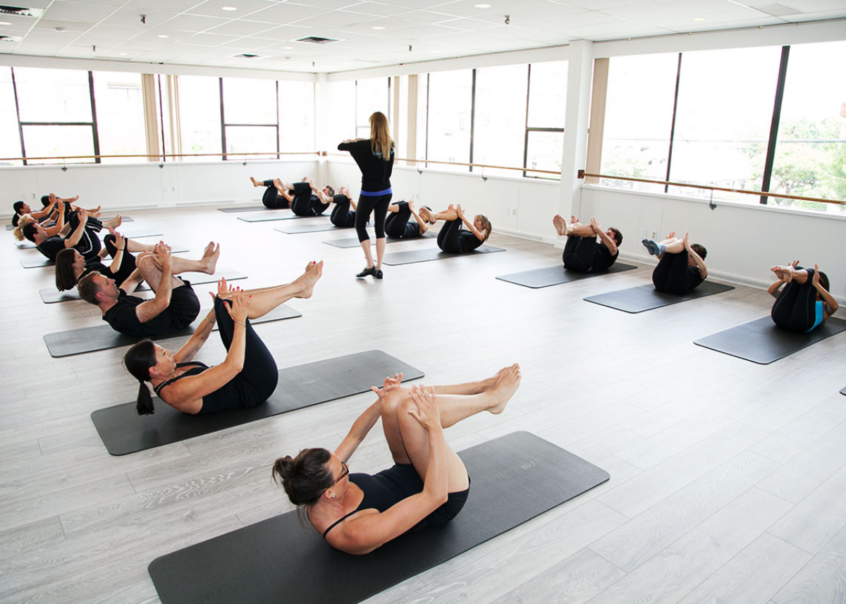
Pilates is another popular choice for beginners of fitness. Similar to Hatha Yoga, Pilates incorporates slow and precise movements with breath work, while aiding toning to the entire body. Overall, this low-impact exercise is great for someone who desires a little more movement than traditional Yoga, with an emphasis on the core muscles. In addition to core work, benefits of Pilates include full body toning, increased stability, muscle strengthening, and endurance building.
There are actually two different key types of Pilates classes that are common, including what are called mat classes and reformer classes. Mat classes, use a mat similar to Yoga, only generally the Pilates mat has extra padding to provide additional support and act as a cushion for pressure points. Reformer-style Pilates classes use a machine called a reformer that slides forward and back with springs, a foot bar, and pulleys to add resistance. Similar to Yoga, this is also another great variation for anyone looking to ease back into fitness slowly and steadily while recovering from an injury.
Yoga-Lates

If both Yoga and Pilates are too hard to choose between, the best of both practices can be combined with Yoga-lates, another winning choice for those just starting out on their fitness journey or looking to switch up their mundane routines. If you’re interested in a unique workout that will rock your core, this routine will be sure to not disappoint.
Yoga-lates synergizes many of the added relaxation benefits that help balance the mind and body in an integrated, targeted workout. One of our very own Circuit instructors Amy Morton who specializes in this class format says:
“Yoga-lates provides the best of both worlds of mat pilates and Yoga, with deeper core work and conditioning, while using control, balance and breath. My combination class provides a perfect blend of lengthening, stretching, strengthening, and deepening your control and core strength.”
Benefits of Yoga-lates include increased flexibility, muscle toning, detoxification, calorie burn, and stimulation of internal organs among many other positive results.
HIIT
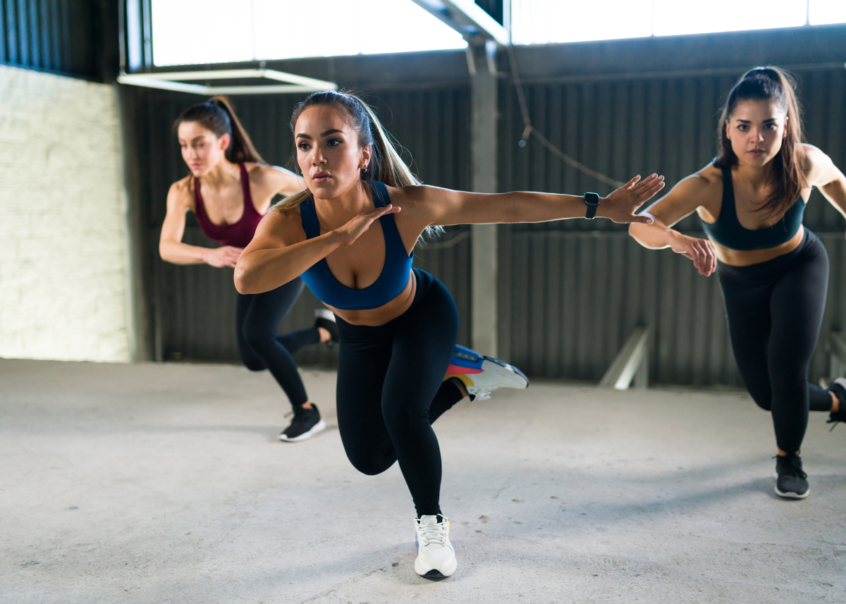
HIIT, also known as High-Intensity Interval Training, is an exercise strategy that alternates short periods of intense exercise movements, followed by less intense, “recovery” periods. The goal with a HIIT class is to reach a sustained target heart rate for exercise, allowing you to quickly burn fat in a brief amount of time.
For beginners, this class is especially great, because you can get the most bang for you buck with the time you spend working out. Well after your HIIT exercise has ended, your body will still burn through calories through what’s known as the EPOC or “afterburn” effect. While HIIT sounds like it could be a more advanced group fitness class, it doesn’t require any equipment, making it especially ideal for virtual at-home workouts you can easily enjoy. Be sure if you are starting out with HIIT to not get caught up in the performance of the rest of your group fitness class, and go at your own pace in order to comfortably build up your stamina and heart rate at a speed that’s safe and best for you.
Barre

Barre is another great option for beginners because similar to Yoga and Pilates, it is a low-impact exercise. Janelle Mistarz, certified group fitness instructor, trainer and coach shares what you can expect from a Barre class for your first time:
“Barre is a full body, low-impact, and high-energy workout where you will move to the beat of the music. It combines traditional strength-training with Pilates, Yoga, & ballet movements. All Barre classes typically start with a warm-up to elevate the heart rate, and a warm-up of the spine and core muscles. You can expect both standing exercises like squats, lunges, & wide 2nd position & floor work such as planks, push-ups, mountain climbers, & tricep dips. There is typically a period of time dedicated to abdominal engagement and strength in both flat back, c-spine and glutes areas, with focus on all three parts of your glutes (maximus, minimus, and medius). These movements can be done on all 4s on the floor, or at a Barre or prop if you have one available”.
While typical Barre in a studio includes an actual bannister style ‘Barre’ that movements are focused around, this engaging exercise can still be done from home virtually. A chair can be used in lieu as a prop, and many other common props including hand weights, a yoga mat and resistance bands can be used, but aren’t always necessary. Generally if you are just starting out, you can just bring a water bottle, optional weights and be sure to remember to wear comfortable clothes you can breathe in!
Bootcamp
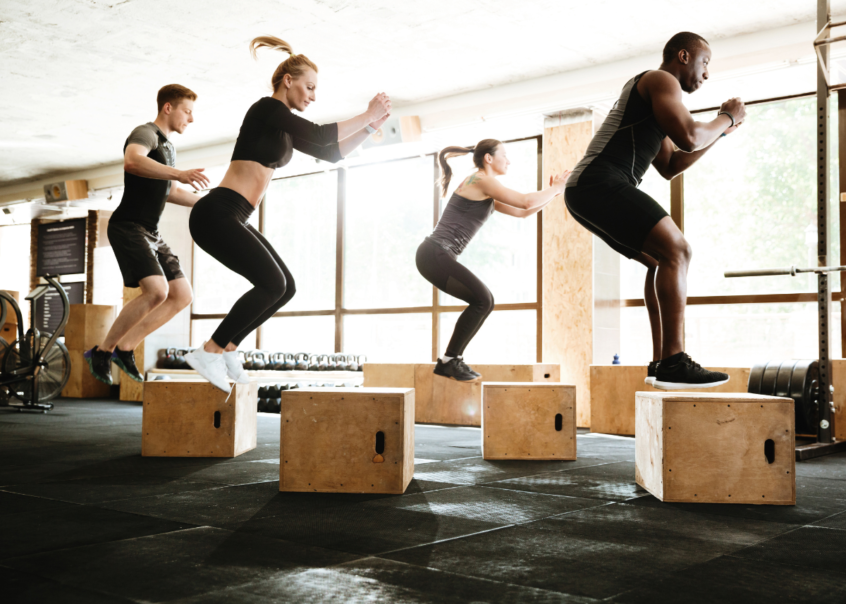
While a Bootcamp class sounds intimidating, it can still be a great class for beginners! If the idea of an in-person Bootcamp class makes you feel anxious, virtual Bootcamp can be a great fit! Meanwhile, if group settings don’t intimidate you, and in-person Bootcamp class can also be very fun and help promote increased performance in a group setting. Bootcamp, like HIIT, can help you burn a lot of calories in a fast amount of time, so if you really want to see results quickly, this class will leave you feeling the sweat and leaving accomplished.
If you go to a Bootcamp class, you can expect a series of high-intensity movements and repetitions followed by low-intensity movements, similarly to HIIT, although Bootcamp focuses much more on strength building exercises paired with cardio for a full-body burn, whereas HIIT focuses more on maximizing your heart rate and cardio. Higher intensity bootcamp exercises can include repetitions of push-ups, mountain climbers, and kettlebell swings paired with less intense movements such as lunges squats or sits-ups. As intimidating as a bootcamp class can sound, this class is still a great start if you are up for a challenge and a deep, rewarding level of fitness.
Zumba

Zumba is by far a workout for anyone who wants to workout without feeling like they are working out! Zumba classes include pre-choreographed instructor-led class with with a warm-up, cool down, and coordinated dance movements to get your blood pumping. If you think you need dance skills to do Zumba, don’t worry. Coordinated people might catch on a little quicker, but the dance moves are fairly rudimentary. All that matters is that you have fun and try to keep up with the rhythm – because usually everyone else in class is trying to do the same thing.
Zumba is great for helping strengthen the core through its numerous dance steps that place emphasis on the midsection, while the legs will get a great tone from the lunges, squats and tones. Simultaneously, you are burning calories and giving your cardiovascular health a boost through high and low-intensity intervals while having a lot of fun. For all reasons, Zumba is a great option for anyone at any fitness level.
Are you interested in bringing a variety of in-person fitness where you live? If so, contact us to get started on a plan for the community you live in today.
